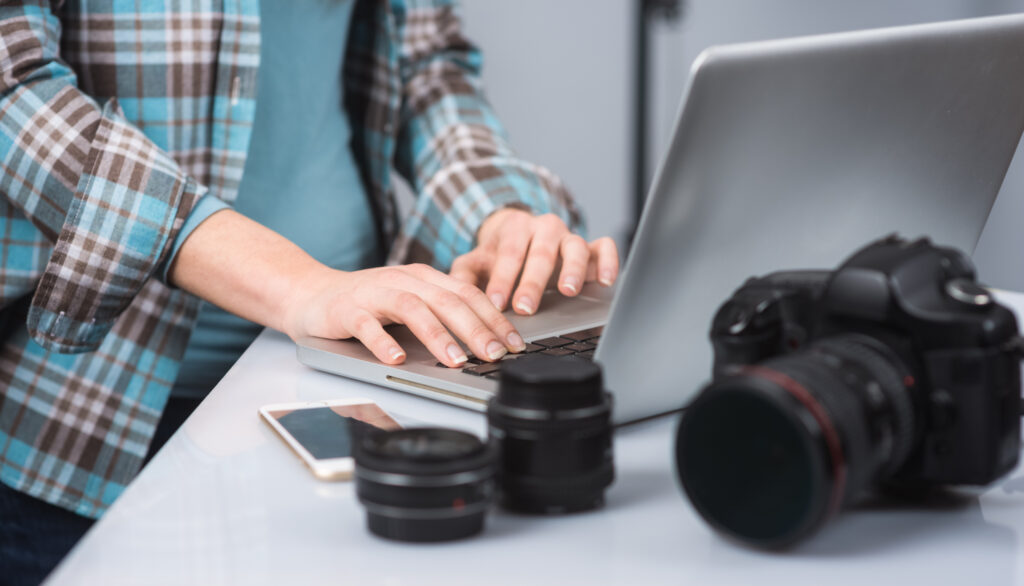A Photographer’s Guide to Avoiding Copyright Infringement
As a photographer, it’s important to not only protect your work but also to respect the intellectual property rights of others. Failing to do so can result in serious legal consequences, including lawsuits and fines. In this blog post, we’ll discuss avoiding infringing on someone else’s copyright when creating and sharing your images. Some topics to consider are determining if a work is protected by copyright, the limitations on copyright protection, and how to obtain permission to use someone else’s copyrighted work.
Determining If a Work Is Protected by Copyright
The first step in avoiding copyright infringement as a photographer is determining whether a particular work is protected by copyright. Copyright protects original works of authorship fixed in a tangible medium of expression, such as books, photographs, and music. Generally, a work is protected by copyright as soon as it is created and fixed in a tangible form. There is no mandate that you file a registration or copyright notice. However, it is generally advisable, as it allows you to recover statutory damages and attorney fees in the event of an infringement.
Not all works are eligible for copyright protection. For example, works that are not original, such as facts or ideas, are not protected by copyright. Additionally, works in the public domain, meaning they are no longer protected by copyright, can be used freely by anyone.
Understanding the Limitations of Copyright Protection
Even if a work is protected by copyright, there are certain limitations on the exclusive rights granted to the copyright owner. For example, the doctrine of fair use allows limited use of copyrighted works for purposes such as criticism, commentary, news reporting, teaching, scholarship, or research, without the need for permission from the copyright owner. However, determining whether a particular use qualifies as fair use is a fact-specific inquiry that depends on several factors. For example, courts may look at the purpose and character of the use, the nature of the copyrighted work, and the amount and substantiality of the work used.
In addition, the concept of de minimis use allows the use of a copyrighted work that is so minimal or trivial that it does not constitute infringement. However, what constitutes de minimis use is also a fact-specific inquiry that depends on the particular circumstances of each case.
Obtaining Permission to Use Someone Else’s Copyrighted Work
If you want to use someone else’s copyrighted work in your own photography, the best way to avoid infringement is to obtain permission from the copyright owner. This can be done through a license or permission agreement. A license would specify the terms and conditions of the use, including any limitations or restrictions on the use. It will also include the duration of the license, and any payment or compensation required.
It’s important to note that simply giving credit to the copyright owner or acknowledging the source of the work is not enough to avoid infringement. Permission must be obtained directly from the copyright owner or their authorized representative.
In some cases, obtaining permission to use a copyrighted work may be difficult or impossible. For example, if the copyright owner is unknown or cannot be located. In other cases, the work may be an orphan work, meaning it is protected by copyright, but the owner cannot be identified or located. In these cases, it may be necessary to consider alternative sources or to use a different work not protected by copyright.
Contact Sanders Law Group if You Have Any Questions About Your Copyright
As a photographer, it’s essential to respect the intellectual property rights of others and to take steps to avoid infringing on someone else’s copyright. This includes understanding when a work is protected by copyright, the limitations on copyright protection, and the importance of obtaining permission to use someone else’s copyrighted work. By following these guidelines and best practices, you can help ensure that your photography is protected while also respecting the rights of others.
If you have any questions or concerns about copyright law, don’t hesitate to contact our law firm for guidance and assistance. You can call us or complete the form on this page to schedule a consultation.



